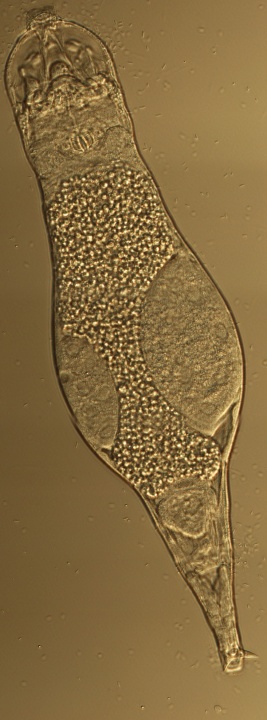FY2011 Annual Report
Ecology and Evolution Unit
Alexander Mikheyev

Abstract
We are interested in uderstanding the interplay between the environment and the genome. In 2011 we have focused on addressing these questions principally through the study of three non-traditional animal models: the bdelloid rotifers, the little fire ant and fungi involved in the fungus-gardening ant symbiosis. Much of the work so far has focused on obtaining the genomic tools necessary to address higher level questions. To that end, we have sequenced four rotifer genomes, the genome of the ant, and eight fungal transcriptomes aiming to publish these results in FY 2012.
1. Staff
- Dr. Yutaka Watanabe, Researcher
- Dr. Denise Brooks, Researcher
- Ms. Man Ying Tin, Technical Staff
- Hitomi Shinzato, Administrative Assistant
2. Collaborations
- Theme: Evolutionary genomics of attine cultivar fungi
- Type of collaboration: Joint research
- Ulrich Mueller, University of Texas
- Theme: Genomics and transcriptomics of Okinawan snake venoms
- Type of collaboration: Joint research
- Steven Aird, University of Maryland University College
3. Activities and Findings
3.1 Rotifer evolution
Bdelloid rotifers are ubuquitous aquatic invertebrates, which are well known for their unique biology. They are believed to be the only group of organisms that has gone without sexual reproduction for tens of millions of years, and have data to back this claim up. Also, recent data suggests that bdelloid rotifers may acquire genes from different kingdoms and even domains of life. We are tackling both of these questions by comparative genomics. We have sequenced genomes of four species with different levels of relatedness -- two isolates of one species, one congeneric, and an outgroup from a distantly related family. We are currently investigating the presence and fuctionality of meiosis-specific genes, as well as other signs of sex in the rotifer genomes. In addition, we are tracing the presence of putatively alien genes in the rotifers lineages.

Figure 1: Adineta vaga, one of the species used in our study. It is about 200 microns long.
3.1 Evolutionary genomics of invasive species
Invasive species are brought by humans into new habitats where they cause ecological and economic harm. Out of necessity, these species must evolve in order to adapt to their new habitats. However, the role that evolution plays in biological invasions is still poorly understood. We use the unusual biology of the little fire ant, which is rated by the IUCN as one of the most damaging invasive species, posing particular dangers to Pacific islands. In addition to being an ecological threat, this species has the capacity to reproduce both clonally and sexually. This allows us to find the founding genotype, living among evolved genotypes, even a century later, and directly compare the genes under selection. The past year was spent preparing the little fire ant genome, and investing into genomic tools necessary for this study.
3.3 Genomics and transcriptomics of Okinawan snake venoms
In their arsenal snakes have many venom components that are used to subdue and partially digest prey. We used transcriptomic and proteomic analysis to examine the trancriptome composition of two local snakes, Protobothrops flavoviridis (Okinawa habu) and Ovophis okinavensis (himehabu). The joint application of mass spectrometry and next generation sequencing of the transcriptome, has revealed novel classes of putative toxins, and, allowed much more accurate quantification of venom composition than possible before. See OIST's news story on this research for more information.
4. Publications
4.1 Journals
Mueller UG, M. A., Hong E, Sena R, Warren DL, Solomon SE, Ishaka HD, Cooper M, Miller JL, Shaer KA, and Juenger TE Evolution of cold-tolerant fungal symbionts permits winter fungiculture by leafcutter ants at the northern frontier of a tropical ant-fungus symbiosis. Proceedings of the National Academy of Sciences, doi:10.1073/pnas.1015806108 (2011).
Mueller UG, M. A., Solomon SE and Cooper M. Frontier mutualism: Co-evolutionary patterns at the northern range limit of the leafcutter ant-fungus symbiosis. Proceedings of the Royal Society B, doi:10.1098/rspb.2011.0125 (2011).
4.2 Books and other one-time publications
Nothing to report
4.3 Oral and Poster Presentations
Nothing to report
5. Intellectual Property Rights and Other Specific Achievements
Nothing to report
6. Meetings and Events
7. Other
Nothing to report.



